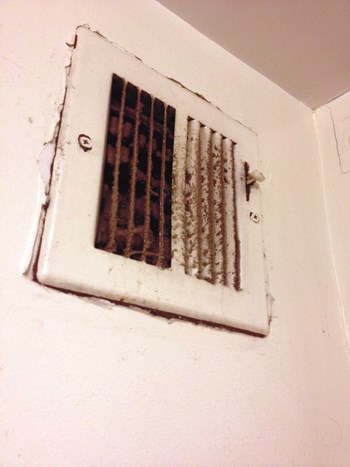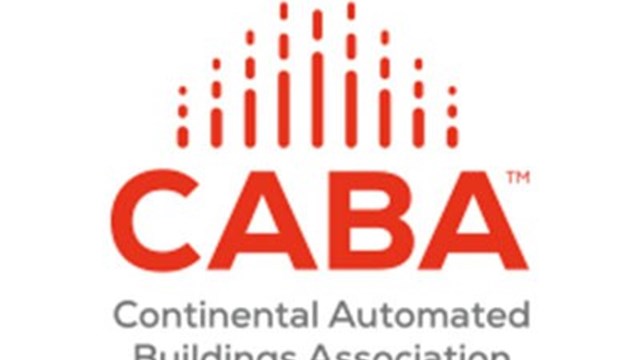
Few things are as important to our health and well-being as the air we breathe, especially inside our own homes. That is why it is so important for individual homeowners as well as management to stay up-to-date on issues of indoor air quality and ensure that everything possible is done to provide a healthy environment, especially in the winter months when so many of us are spending time in the warmth of the indoors.
Problem Areas
Staying warm is always priority one in the winter months. That desire to keep the cold out and the warmth in can lead to problems, though, with air quality. “Ventilation and air exchange is a big component of indoor air quality. Obviously with the windows open you get a lot of mixture of air with a tendency to dilute pollutants. During the winter when everything is sealed up you get less ventilation and what happens, particularly during the heating season is you’ll have the potential for the exhaust gases to affect the indoor air,” says Richard M. Lester, M.S.I. H., president of Garden State Environmental in Glen Rock. “That can come from a multitude of sources, anywhere where there is combustion, furnaces and hot water heaters. They are creating heat and burning fuel and when you burn fuel you generate a variety of exhaust gases.”
“The simplest problem is lack of fresh air,” adds David DiMaio, the owner of New Jersey Air Quality, a commercial vent and duct cleaning company in Haledon. “The average person spends more than 85 percent indoors. If you do not have fresh air introduced into the home, it can cause a number of things, anywhere from exhaust or emissions, from appliances laying stagnant in the home (low levels of carbon monoxide from hot water heater, stove pilot, and exhaust from heating system), to accumulations of dust allowing food for microbial growth and even dust mites.”
Experts believe that carbon monoxide can be problematic in the wintertime because potential sources inside a building that may generate carbon monoxide include gas heating systems, gas stoves, gas hot water heaters and portable kerosene heaters, appliances which tend to get a workout during the winter months. Because carbon monoxide is colorless, odorless, tasteless and non-irritating, the signs of carbon monoxide exposure can be ignored, or a person may lose consciousness and be unable to escape. Carbon monoxide detectors can be purchased from any home improvement store and each home should have one.
According to Daniel Emmer, the communications manager for the New Jersey State Department of Health, 98 people were hospitalized in New Jersey from 2008-2011, due to unintentional carbon monoxide poisoning.
The agency also states that carbon dioxide is a normal byproduct of exhaled breath and is commonly measured as a screening tool to evaluate whether adequate volumes of fresh air are being introduced into indoor air. If carbon dioxide levels are more than 1,000 ppm (parts per million), there is probably inadequate ventilation; and complaints such as headaches, fatigue, and eye and throat irritation may be prevalent. Properly-ventilated buildings should have carbon dioxide levels between 600 ppm and 1,000 ppm, with a floor or building average of 800 ppm. A high level of carbon dioxide may also indicate that other contaminants in the building may be present at elevated levels.
In addition, spaces can be tested for radon, another potentially deadly gas that can occur naturally in soil and enter homes through cracked foundations, crawlspaces and basement drains.
On a less severe note, during the winter months, moisture can be a problem in homes. “During the winter months in residential homes, we sometimes find moisture/algae/mold forming in the vents, and this is mostly from built-in furnace humidifiers that haven’t been maintained and cleaned,” says Michael Antczak, owner of Antczak’s Complete Service Company, LLC, located in Kendall Park.
Mold is common, says Lester. “In the winter months it’s very common to have frozen pipes and that can lead to water losses and mold. We often get calls for mold problems associated with frozen pipes.”
“Even though mold is thought to be a harmful and ‘scary’ substance, mold is a normal thing to have airborne in the winter time in the home and outdoors,” says DiMaio. “However in the winter, the fresh air ratio to stagnant air gets tipped towards stagnant air; meaning you’re breathing more contamination than fresh air.”
Other irritants include dust as well as construction debris found in homes that have never had the vents cleaned. “Homes with poor air quality might have discolorations on surfaces or staining on walls,” says Lester. “Visually you’ll see mold-like growth and an excessive amount of dust and odors.”
Signs of poor indoor air quality include heavy dust build-up on the furnace filter and on the return vents; dust and black lines around the air ducts; dust build-up on furniture; debris such as insect bodies and food particles in floor vents; and odor coming from inside the vents.
Homeowners, unit owners and shareholders who suffer from allergies and chronic sinus issues may also be showing signs of indoor air quality in the home. Symptoms resulting from seasonal air quality changes may range from sneezing and nasal or eye irritations to coughing, drowsiness and headache. Individual allergic reactions to mold or pollen, for example, may be severe depending on sensitivity.
“One of the first signs of poor indoor air quality is a feeling of discomfort; knowing something is wrong once you enter the area, but not knowing what it could possibly be,” says DiMaio. “It could be as simple as dry air (the loss of humidity) or even airborne mold particles.”
Built-in Issues
Sometimes indoor air quality issues stem from chemicals and other products introduced into the building for construction, cleaning or similar activities.
In addition, the type and location of a building can impact air quality. “The type and location of a building can absolutely affect air quality,” says Lester. “The type of building, particularly in terms of the types of materials that are used in construction has a direct bearing on air quality. Older type buildings are typically draftier and those buildings traditionally have better indoor air quality because they were so drafty. Newer buildings are a lot tighter and they use materials like engineered wood and plastics and those things affect air quality.”
Another factor says Lester is that “buildings are not hermetically sealed so the location of a building or a house is very important. A rural area where there is not much development and not much traffic you’re not going to be impacted. If you’re in an urban environment where there’s a lot of vehicular traffic or factories—if you’re downwind of that and it can get into the house. That’s going to impact your environment and air quality.”
“A building that is located in a warm climate tends to have the air conditioning running all day and then shut down at night to save energy,” adds DiMaio. “The problem is that while the temperature outside is warm and the temperature inside is cool, it tends to cause condensation within the ventilation system and can cause severe mold and mildew growth. It’s a very common problem in larger buildings with multiple HVAC units.”
Experts agree that cleaning liquids can also contribute to indoor air problems by releasing volatile organic compounds (VOCs). When it comes to chemicals and other unusual causes of air quality issues, the concept of “sick building syndrome” may come to the fore.
“The term ‘sick building syndrome’ came to be in the early ‘70s with the energy crisis,” says Lester. “What was happening is that they were starting to build buildings that were energy-efficient, meaning sealed windows and not a lot of air circulation. And as a result of that in the early ‘70s there were a lot of complaints from building occupants about poor air quality and certain non-specific symptoms. In response to that government at the federal, state and local level responded to those complaints by testing for everything under the sun. So ‘sick building syndrome’ was a term to describe these non-specific symptoms. It was felt that if more than 20 percent of the occupants were reporting these non-specific symptoms they kind of characterized that as ‘sick building syndrome.’”
Avoiding & Solving Problems
In any situation, the best way to solve a problem is to prevent it from happening in the first place. Homeowners should have their air ducts cleaned by a professional air duct cleaner every two to five years. And it is important to ensure that the cleaners are experienced.
Other preventive measures should include keeping furnace filters clean and replacing them often and vents, ducts, and air handling units should be routinely inspected at a minimum of once a year depending on usage.
However, any incidence involving water damage, mold or microbial growth, building of dust or debris, or severe odors coming from the ventilation system should prompt an inspection from an indoor environmentalist specialist.
“First and foremost an accurate test of the outdoor air quality in the location of the project site is always performed. This would be a baseline used to compare all of the finding in the indoor inspection,” says DiMaio. “As far as the indoor testing, a visual inspection is always first. This is to verify the occupant’s concern if further testing would need to be performed. The process usually is a stress-free type of situation; however, when a home is being tested, it is very invasive. You need to basically search and test every inch of the home. If a problem is overlooked, it could lead to bigger problems in the future.”
For boards and property managers, it is important to maintain not only a regular maintenance and testing schedule for the building, its equipment and its environment but also to ensure an open dialogue with residents.
In short, when it comes to maintaining a healthy indoor environment and finding a way to feel confident in the air we breathe, proper monitoring, effective education and quick maintenance and repair are imperative. Stay clean, keep dry, learn more, follow maintenance standards and then, just breathe easy.
Liz Lent is a freelance writer and a frequent contributor to The New Jersey Cooperator. Staff Writer Christy Smith-Sloman contributed to this article.






Leave a Comment